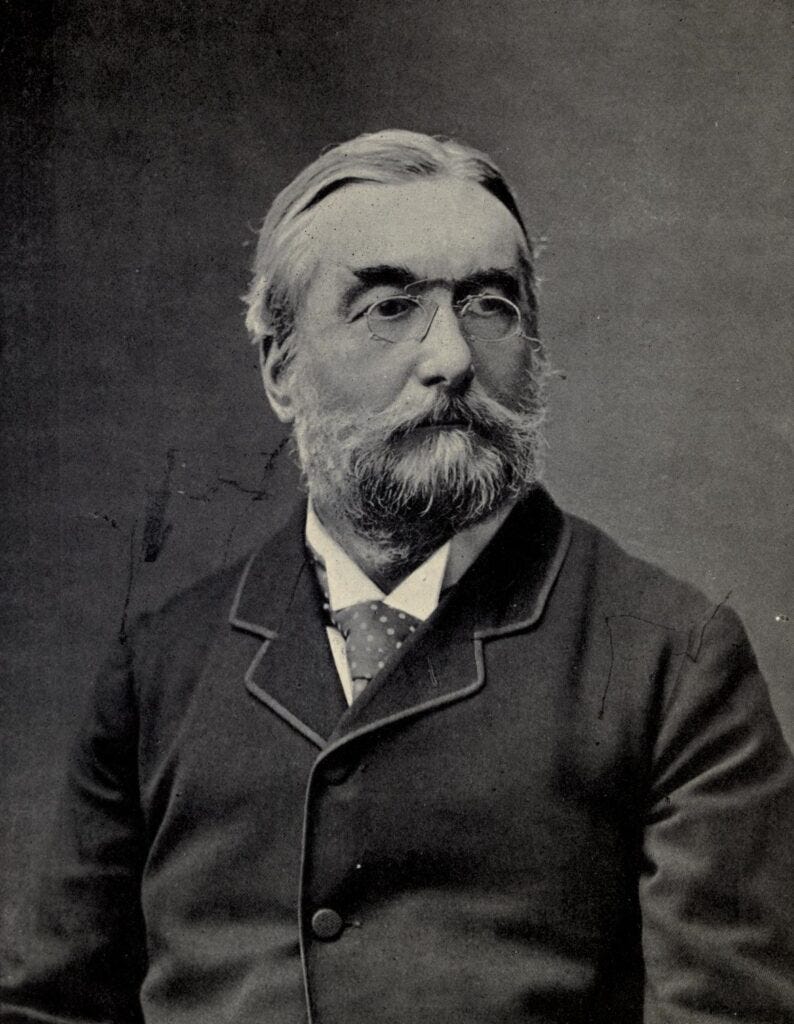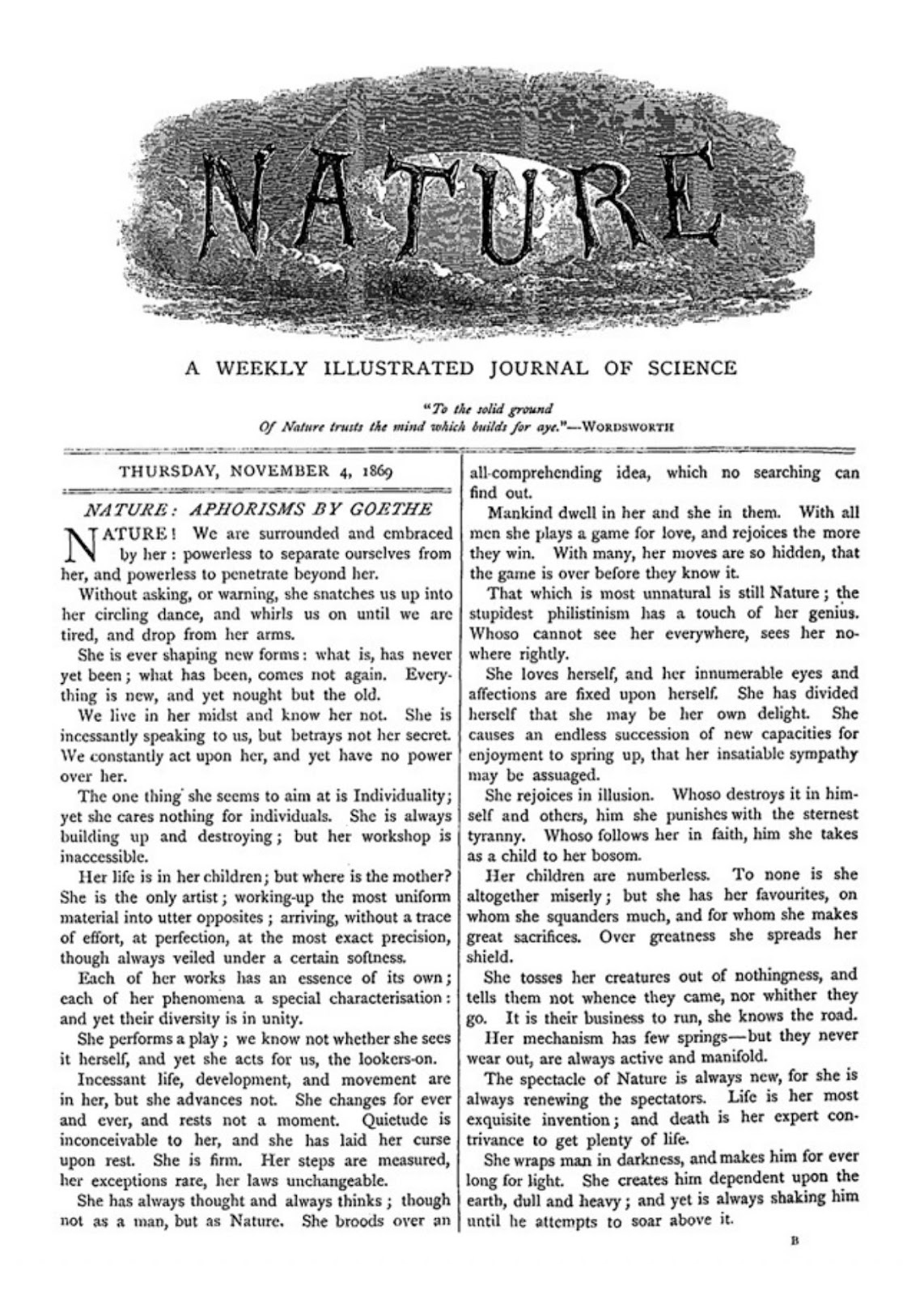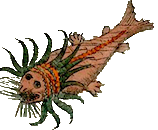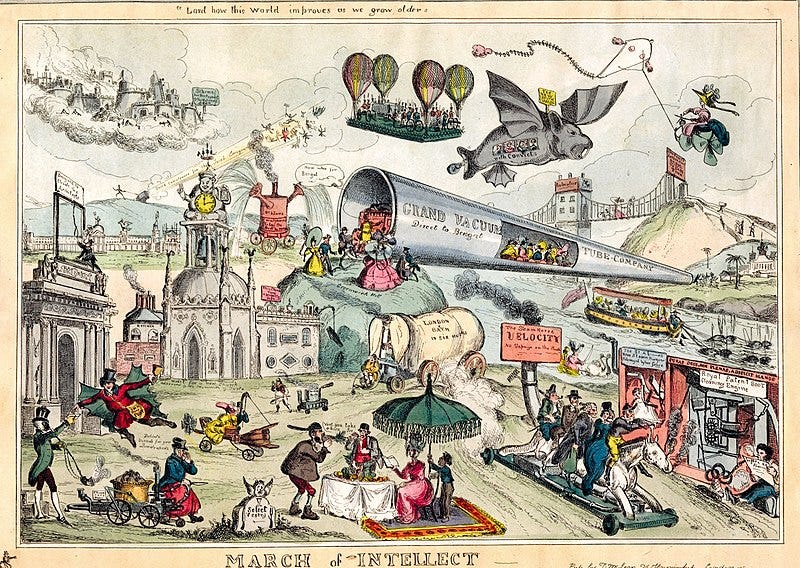Why Is ‘Nature’ Prestigious?
AWM #95: My finalist entry to the ACX book review contest, on ‘Making Nature’ and the history of status in science publishing 🔭
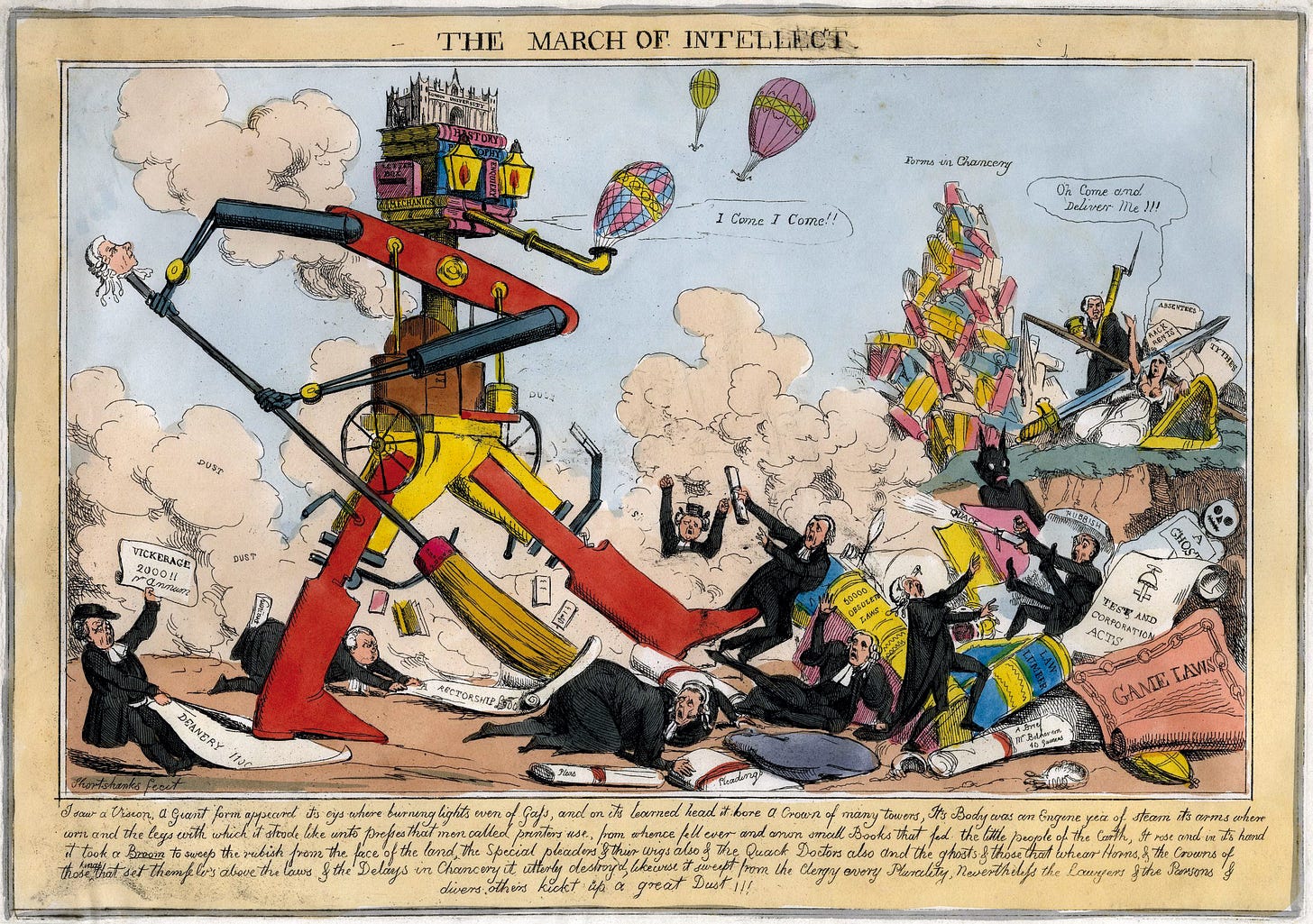
Today I’m publishing a lightly edited version of my review of the book Making Nature. It was first published in May on the Astral Codex Ten blog as part of an anonymous book review contest. The results were announced last Friday, with two blogger peers I admire — Erik Hoel and Roger’s Bacon — taking the 1st and (one of the) 3rd prizes, respectively. My own review was merely a finalist, but received the following words of praise from Scott Alexander:
The Making Nature review did a great job talking about and analyzing a trend I’d never thought about before, far beyond even what was in the book.
Not gonna lie, it feels great. And it gave me quite a few new subscribers. (If you’re one of them, hi!)
I decided to read Making Nature back when I was independently studying scientific writing and publishing. Although that project is over, I’m glad I got to review this book and gain a really good understanding of the status games that have become established in science. Everyone takes these games for granted, but few people seem to know why they exist. If you’re curious, read on.
The world of scientific publishing is organized as a hierarchy of status, much like the hierarchy of angels in the Abrahamic religions. At the bottom are the non-peer-reviewed blog posts and Twitter threads. Slightly above are the preprint servers like arXiv, and then big peer-reviewed journals like PLOS One. Above those are all the field-specific journals, some with higher reputation than others. And at the top, near the divine presence, are the CNS journals: Cell, Nature, and Science.

Leaving aside Cell, a more specialized biology journal that seems to have gotten into the CNS acronym the same way Netflix got into the FAANG acronym, Nature and Science are very similar. They both publish articles in all scientific fields. They both date from the 19th century. They’re published weekly. They jointly won a fancy prize for services to humanity in 2007. And having your paper in either is one of the best things that can happen to a scientist’s career, thanks to their immense prestige.
But how, exactly, did Nature and Science become so prestigious? This is the question I hoped Making Nature: The History of a Scientific Journal, a 2015 book by historian of science Melinda Baldwin, might answer. It focuses on Nature, but much of its lessons can likely be extrapolated to Science considering their similarity.
I grew curious about this when I realized that most researchers treat journal prestige as a given. Everyone knows that Nature and Science matter enormously, yet few would be able to say why exactly. But this is important! Prestigious institutions, from universities to media companies to major sports competitions, have a huge impact on the world. It’s useful to understand how they came to be, beyond “being famous for being famous.”
One reason this is more difficult than it sounds is that we often settle for superficial answers. Selectivity, for instance, is a common explanation: prestige simply comes from obtaining what is hard to obtain, such as a Harvard degree, an Olympic medal or a Nobel Prize. Nature is indeed highly selective, accepting less than 10% of submitted articles (and the vast majority of papers are not even deemed worthy of a submission to Nature by their authors). Yet harsh selectivity alone cannot explain prestige, or it would be trivial to launch a prestigious journal or university just by setting an artificially low acceptance rate.
Another facile explanation is longevity. It’s true that prestigious institutions are often old, and indeed Nature has been around for more than 150 years since its birth in 1869. Science is only slightly younger, having been founded in 1880. But there are many older scientific journals: the oldest one, the Philosophical Transactions of the Royal Society, was created two hundred years before Nature, in 1665. Then there are more recent publications that are prestigious: Cell, for instance, was founded in 1974. The correlation between prestige and longevity is real, but imperfect. It also says nothing of causation: does longevity cause prestige, or does prestige cause longevity?
What matters is not the span of time per se, but the specific events that happened — in other words, the history. Making Nature, while not specifically about prestige, gives us exactly that.
We’ll first examine the origins of Nature and how it disrupted the publishing landscape of its time (Part I). Then we’ll study the factors that allowed it to build a reputation during its first century of existence (Part II). We’ll end with a focus on the 1970s, when selectivity and prestige suddenly became important to Nature and scientific publishing in general (Part III).
I. On the Origins of Nature
The story begins with Nature’s founder and first editor, Norman Lockyer.
Lockyer had a cushy job as a civil servant in the British government, but dabbled in astronomy in his spare time. In the 19th century, dabbling in astronomy in your spare time could be an intellectually productive hobby: the line between professional and amateur science was blurrier then, and it wasn’t hard to contribute original research even without formal training. During the 1860s, Lockyer published several papers on astronomical observations, the most consequential of which might be the co-discovery and naming of the element helium, from his studies of the sun. His reputation grew among the “men of science” (as scientists called themselves then) of Victorian Britain, and he was soon elected to the Royal Society.
But astronomy was an expense, not a source of income. Lockyer routinely supplemented his government job by writing nonspecialist scientific articles and books for a lay audience. Then, one day, he had an idea for a new kind of publication. It would be a weekly periodical to disseminate scientific knowledge to the broader public — but unlike the other periodicals that existed at the time, it would be written by the prominent men of science themselves. It would have a simple, evocative name: Nature.
Lockyer summarized the two aims of Nature like this:
FIRST, to place before the general public the grand results of Scientific Work and Scientific Discovery, and to urge the claims of Science to a more general recognition in Education and in Daily Life;
And, SECONDLY, to aid Scientific men themselves, by giving early information of all advances made in any branch of Natural knowledge throughout the world, and by affording them an opportunity of discussing the various Scientific questions which arise from time to time.
In other words (and getting rid of the old-fashioned capitalization of random adjectives and nouns), Nature was meant to do two things: communication from scientists to the public, and communication among scientists. It was an interesting idea. It was also a new one; until then the two aims had been separate.
Recall that scientific journals have existed since 1665. During their first two hundred years, they primarily served to record the meetings of learned societies. The Philosophical Transactions of the Royal Society were originally just that: summaries of whatever “philosophical” questions were discussed at the Royal Society. Aside from journals, specialized books were common and were in fact the higher-status way to communicate science in Victorian Britain. Charles Darwin’s On the Origins of Species, published in 1859, is the most famous example. Informal correspondence between scientists was also a major, but private, channel: Darwin wrote more than 15,000 letters in his lifetime, enough to fill 30 volumes.
With the exception of some books, none of the above were intended for laypeople. Educated non-scientists (professionals, clergymen, statesmen, etc.) instead got their science news from generalist or literary periodicals such as the Athenaeum magazine. The articles in those publications were not written by specialists, but by journalists and dilettantes. Lockyer’s view, shared with his close supporter Thomas Huxley — a biologist known for defending Darwinian evolution — was that they were riddled with errors and theological overtones. It would be better, they thought, if scientists did the work of communicating their research themselves.
It was bold of Lockyer and Huxley to assume that scientists would be interested in doing this communication work. They weren’t. Almost immediately after Nature was founded, its contributors ignored the popularization part (“not a high-status undertaking,” Baldwin’s book says) and focused on the intra-science communication part. They did write summaries and abstracts of their own research, as Lockyer had intended, but they expected that their readers would be other men of science. Within three years, the educated laypeople who were Lockyer’s target audience were complaining that they could no longer understand the contents.
Thus the first of Nature’s two aims was met mostly with failure. Fortunately, this was balanced out by unexpected success at the second aim.
Scientists did actually enjoy writing for Lockyer’s magazine, in large part because it was published weekly. They found that writing a summary of their own research in Nature was an excellent way to share their results quickly and gain attention from other scientists. Books were slow; Darwin took many years to write and publish On the Origin of Species, for instance. The journals of scientific societies were slow; you had to wait for a meeting to take place and then for the meeting’s “transactions” to be published. Private correspondence was fast, but it wasn’t public. Through publication speed, as well as other factors as we’ll see below, Nature filled a niche in the ecosystem. It was the Twitter of 19th-century British science.
Soon enough, this model would be copied, most notably by the journal Science in 1880. According to its first editor, Science was explicitly meant to, “in the United States, take the position which ‘Nature’ so ably occupies in England.” In just a few years, Nature had disrupted scientific publishing and established itself as a useful and unique institution of science, recognized by specialists both in the UK and abroad.
II. One Hundred Years of Building a Reputation
Despite its popularity, Nature didn’t become prestigious overnight. Far from it, in fact. Making Nature often reminds us that the journal spent most of its history as a low-grade publication where anything could be printed quickly, as long as it was factually correct. (This was ensured by basic checks from the editorial team; Nature articles were not consistently peer-reviewed until the 1970s.) As late as the 1960s, a researcher publishing a preliminary report in Nature was expected to follow up with a longer paper “in a more serious journal.” In other words, Nature delivered quick and cheap distribution, not luxury brand approval.
This changed about fifty years ago, as we’ll see in Part III. But to understand what happened then, we first need to examine the characteristics of the journal in the roughly 100-year period from its early days until prestige took over, starting with a deeper look into publication speed.
Publication Speed
John Maddox, editor of Nature in the late 20th century, said that “one of Nature’s greatest early assets was the speed of the Royal Mail.” You could write to Nature, be published within a week, and read the replies to your letter within two weeks. This was state-of-the-art communication tech!
Consider how many times publication speed is mentioned throughout the first half of the book (emphasis mine):
What made Nature unique was, in large part, its ability to act as a venue for . . . discussions via its correspondence columns and its weekly publication schedule. (p. 8)
Many British men of science found that one of the fastest ways to bring a scientific issue or idea to their fellow researchers’ attention was to send a communication to Nature. (p. 39)
Unlike the literary periodicals, there was almost no delay between the submission of a piece and its appearance in the journal. (p. 63)
A second reason Nature’s speed of publication would have been compelling to men of science is that getting one’s work into print quickly had become an increasingly essential part of establishing priority for a scientific finding or theory. (p. 65)
Scientific weeklies [such as Nature] played a unique role in researchers’ publishing strategies at the end of the nineteenth century by offering researchers a forum where short articles could be printed quickly. (p. 105)
Both the Proceedings [of the Royal Society of London] and the Philosophical Magazine had significant lag times between submission and publication . . ., which made Nature and its weekly turnaround uniquely valuable for the priority-conscious Rutherford. (p. 109)
[Rutherford] sent his most interesting experimental results [to Nature] immediately, both as a way of keeping his colleagues updated on his work and as insurance against being scooped as he had in 1899. (p. 112)
These quotes highlight two distinct reasons why speed was important. The first, as I hinted at earlier, was Nature’s role as the academic social media of its time. It was simply the best way to have discussions about scientific topics — or science itself — that could, unlike private correspondence, reach a large audience. More on this in the next section.
The second reason, as shown by the mentions of physicist Ernest Rutherford, was establishing priority. Today we take for granted that being the first to publish new ideas or results is important, but in the 19th century this was less clear. To bring up Darwin as an example again, he kept his thoughts on evolution private for many years, because he wanted to make sure his argument was sound before he submitted it to the public (although he did eventually sense the urgency of publishing the theory before Alfred Russel Wallace did). But as science became professionalized, “not being scooped” became more and more crucial, and the weekly Nature was a good tool to avoid that.
All this talk of speed may surprise anyone who has recently submitted a paper to Nature. In 2016, an analysis revealed that the median time for Nature to review a paper was 150 days, i.e. 5 months, up from 85 days a decade earlier. Nature itself reports, for the year 2020, a median time of 226 days between submission and acceptance. We’re a long way from “less than a week.”
Why was there a decrease in publication speed? As we might expect, the reason was Nature’s growing popularity, especially among the international scientific community. At least, that’s what happened the first time there was a slowdown, in the mid-20th century.
Early on, Nature was a journal for and by British scientists. But in the first half of the 20th century, science in general and Nature in particular began to involve much more collaboration between researchers across borders. It was a big deal, for instance, when a foreign government banned Nature, as Nazi Germany did in 1938; German researchers had been using it as an important source of scientific news. The ban was furthermore covered in non-British media, such as The New York Times, indicating that the journal was internationally newsworthy. Such an increase in international readership meant more letters and articles sent to the editors, and by the 1950s, there was such a backlog that submissions needed to be held for six months or more.
In the 1960s, the new editor John Maddox recognized this as a problem. He began his editorship by clearing the backlog, and even printed the date of submission along with each scientific paper to show everyone how quick Nature was at reviewing articles (“often within a month,” Baldwin’s book says). Clearly, Maddox thought that restoring the speedy reputation of the journal was important. He seems to have succeeded, for a time. As late as 1989, during a controversy around cold fusion, a Wall Street Journal article said that Nature was still fast: it was able to print papers “in as little as three weeks instead of the more usual lead time of six to twelve months for other scientific publications.”
Thus, despite a dip in the middle of the century due to its popularity and international reach, speedy publication was still an important characteristic of Nature in the 1970s. A second — and so far permanent — decrease occurred more recently, perhaps as a result of prestige and the competition of near-instantaneous online platforms, but that’s another story.
Network Effects
As of 2022, scientists argue in public on Twitter, blogs, and other online platforms, like ResearchHub. In the 19th century, Twitter and ResearchHub hadn’t been invented [citation needed]. Fortunately, Nature was there.
A network effect occurs when the value of a product comes primarily from the people who use it. If there are two competing telephone systems, the most valuable one is whichever has the most users (or at least the users you want to talk to). If you create an improved Twitter clone, then all its amazing features won’t do much if you don’t somehow manage to capture Twitter’s network of several million people. Likewise, Nature became an interesting journal to read and contribute to because it gained the attention of Britain’s scientific elite as the place to discuss big science questions.
This role as a forum was a constant in Nature’s history, as Making Nature shows with several detailed accounts of debates that took place within the journal’s pages. Some examples:
Controversies over the age of the Earth in the 1880s.
Debates in the 1920s on whether the word scientist was acceptable to describe the people doing science as opposed to man of science or scientific worker.
The development of plate tectonics theory in the 1950s and 60s (in this case, Nature and Science were on approximately equal footing).
High-profile controversies about homeopathy and cold nuclear fusion in the 1980s.
How did Nature become the main scientific forum in the UK and, later, the world? As we saw, the weekly publication schedule was one of the key factors, since discussion requires people to be able to reply to each other in a timely fashion. But speed alone wasn’t sufficient. There were many scientific weekly periodicals in Victorian Britain, and Nature wasn’t even the most popular: in the 1870s, “other weeklies—such as Chemical News, Knowledge, and English Mechanic—all boasted more subscribers than Nature’s estimated 5,000.” Why didn’t one of these magazines become the best venue to discuss science?
One answer seems to be that Norman Lockyer personally relished controversy and encouraged “spirited disagreement” within his journal, making it ideal for whoever was itching to pick a fight over scientific ideas. If Lockyer had chosen to dampen the tone of some Letters to the Editor he received, or even reject them for publication, then the debates would have moved elsewhere. Easy enough to make a parallel with the social media that thrive today on what we’ll also politely call “spirited disagreement.”
Another answer is that Nature managed to occupy the sweet spot on the tradeoff curve between generalist and specialist publications. Since it covered all fields of science, Nature was a better fit than a magazine like Chemical News to discuss interdisciplinary questions as well as questions on how science should be done. At the same time, it was a specialized journal in terms of its audience and contributors: they were almost all professional scientists. Add the fact that it was read by most scientists in Britain, as well as a significant proportion of non-British scientists, and you get a publication that was widely considered the best means “to get to the right people” as the editor of Chemical News himself admitted in 1895.
Establishing this network of “the right people” was an explicit goal of Lockyer from the beginning. One of the first things he did after founding the journal was to ask “men of science—some whom he knew personally, others whom he knew by reputation” (i.e. he cold emailed them) to publish their names as supporters and future contributors. The most important of those names was the aforementioned Thomas Huxley, who was not only a prominent biologist but also a popular essayist in the literary periodicals as well as the leader of an influential group of scientists called the X Club. Huxley was a strong supporter of Lockyer’s project, and he frequently wrote for Nature in the early years, which helped it cement its reputation.
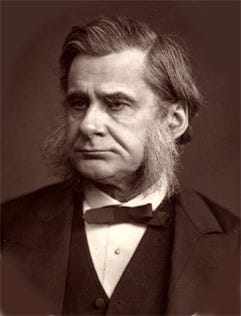
Victorian Britain’s most beloved scientist — yes, I’m talking about Darwin again — also enjoyed publishing in Nature. Darwin was an elderly and highly respected scientist by the time of the journal’s founding, and the abstracts and letters he frequently sent to Lockyer’s publication certainly gave it a status boost.
And this was only the start of a long list of household names who got involved with Nature at one point or another. In physics, for instance, Lord Kelvin, Ernest Rutherford, Niels Bohr, Enrico Fermi, and Lise Meitner were all important contributors. Some of the most famous papers in the field, such as James Chadwick’s 1932 report on the possible existence of the neutron, or Meitner and Otto Frisch’s 1939 letter proposing the idea of nuclear fission, were published in Nature. In biology, James Watson and Francis Crick’s 1953 work on the structure of DNA is probably the most historic paper to have appeared within its pages.
Since Nature in the mid-20th century was popular but still not very prestigious, I’m comfortable assuming that these famous scientists and discoveries helped its reputation rather than the other way around. Today, the arrow of causation is mostly reversed: scientists become influential because they publish research in the most prestigious journal, rather than the journal becoming prestigious because it publishes big names and big papers. Of course, this is a self-reinforcing feedback loop that keeps benefitting Nature, thanks to network effects.
Finally, a word about language. Nature, obviously, is published in English. But English wasn’t the dominant intellectual language back in the 19th century: French and German were more important. The rise of English as the lingua franca of science occurred during the 20th century, thanks to the political dominance of the British Empire and then the United States. As a result, Nature and its American equivalent Science gained a major advantage over their French (e.g. La Nature) and German (e.g. Naturwissenschaften) counterparts.
Making Nature doesn’t belabor this self-evident point, but it’s worth mentioning that Nature benefitted from a global network effect that would have been far less attainable outside the Anglosphere.
Survival and Conservatism
Speed, elite networks, and English are great, but they won’t help if your publication fails to turn a profit and shuts down. As they say, the lesson of survivorship bias is that you should optimize for being a survivor. Thus the story of Nature is also the story of how it managed to stay alive, unlike most of its contemporaries.
Nature was (and still is!) a venture of a London publisher called Macmillan and Company. It was very much intended to make money. But Victorian Britain was a crowded market for periodicals. It was common for publications to last just a few years after proving unable to attract enough subscribers. Lockyer himself had been briefly involved as the co-founder and science editor of a generalist magazine called The Reader, which existed only from 1863 to 1867 (and lost its science section in 1865). It would be tempting to contrast this with the popular success of Nature, but as we saw, most of Nature’s target audience couldn’t even understand the journal, and as a result both its subscriber base and revenue remained small.
The survival of Nature therefore depended on the goodwill of its owner, Alexander Macmillan. And it took a lot of goodwill! Nature operated at a loss for an entire 30 years. Only at the very end of the 19th century did it manage to turn a profit.
This surprising tolerance for financial loss seems to have stemmed from the other activities of Macmillan and Company: they sold scientific books, and Nature was a good way to reach that market. Still, without a wealthy publisher who was committed to back up Lockyer’s project for a long time, it would likely not have survived.
Lockyer also displayed impressive commitment. He remained at the helm of the journal for a full half-century, from 1869 to 1919. Although none of his successors would hold the position that long, most would last at least twenty years, resulting in a strikingly short list of eight editors-in-chief over a 153-year history. Meanwhile, the journal was never sold: Macmillan and Company still exists and still owns Nature, even though corporate mergers have made the exact ownership structure difficult to figure out. (Springer Nature, a company created in 2015 by merging some divisions of Macmillan and other entities, is the immediate parent company of Nature.)
The picture that emerges is that of a stable, conservative institution, with committed owners and editors, that has changed slowly even as it was a witness to the changes in science itself.
This is nicely reflected in the stability of Nature’s mission and visual identity. The original mission statement was left unchanged from 1869 to 2000, including gendered references to “Scientific men” and “men eminent in Science.” The current version is shorter and gender-neutral, but overall similar, although I note that the ordering of the two main aims has been reversed:
First, to serve scientists through prompt publication of significant advances in any branch of science, and to provide a forum for the reporting and discussion of news and issues concerning science.
Second, to ensure that the results of science are rapidly disseminated to the public throughout the world, in a fashion that conveys their significance for knowledge, culture and daily life.
Similarly, the original masthead image, which dates from the very first issue, appeared at the top of the journal for 89 years, until 1958 (with slight variations).
A central point of Making Nature is that Nature co-evolved with the British and international institutions of science. To do so, it had to strike a balance between conservatism and innovation. My impression is that Nature was more often on the conservative end of the spectrum, serving as a rock-solid stage where the rest of science could take place.
Such an attitude was helpful from the beginning, but it probably became even more important after the 1970s, when everything changed.
III. WTF Happened in the 1970s?
A fun puzzle from the social sciences: what happened in the early seventies? As evidenced from a multitude of charts, various patterns in society seem to have veered off course around 1971, including growth in wages, inflation, housing costs, energy consumption, number of lawyers, divorce rates, fertility rates, and meat consumption. Whether it was a coincidence or part of the same mysterious phenomenon, we can add to this list the rise of prestige in the science publishing industry.
To be clear, I’m the one who claims that this shift was a specific and momentous event. Melinda Baldwin acknowledges many times that Nature went from a low-grade magazine to a prestigious journal, but she remains vague as to what, exactly, was the turning point. In the chapter on the 1970s, she treats the increased selectivity and reputation as just one of many things that happened during this period. It was only in the course of writing this review — with a deliberate focus on prestige — that I realized something significant had occurred in that decade, and that this something affected more than just Nature.
Let’s see what the book does tell us, and then I’ll offer a plausible explanation from elsewhere.
Changes to Nature in the 1970s
The 1970s mostly coincide with the leadership of Nature’s shortest-tenured editor, David Davies. Davies took over from John Maddox in 1973 and proceeded to make a number of changes. He made Nature a unitary publication again, after a short-lived experiment to split it into three journals. He reformed the style guide for contributors. He allowed for cartoons and some humor in his editorials. He also overhauled the journal’s physical appearance: from now on, Nature’s covers would feature interesting images as opposed to articles or advertisements.
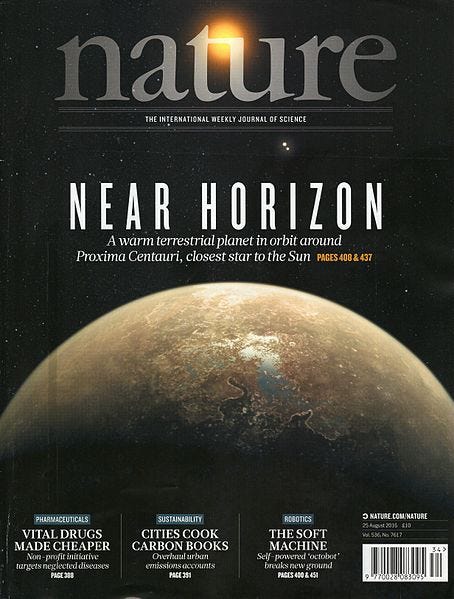
Nature under Maddox and Davies followed the same trend of internationalization as in the previous decades, but the seventies saw what was perhaps the fastest growth outside the UK. Consider these approximate statistics on the origin of research articles from the years when there was a change in editorship:
1966 (when Maddox became editor): 40% British and 60% international
1973 (Davies): 33% British and 67% international
1980 (Maddox again): 20% British and 80% international.
“International,” of course, mostly means the United States. The 1960s and 70s are the golden period when the US overtook all other countries in most domains, including science. Nature could not ignore this, and opened a satellite office in Washington D.C. in 1970. Interestingly, however, the journal’s Britishness seems to have helped it be seen as more international than its rival Science, which researchers in France, Germany, Japan, and other countries may have considered too American.
A few decades earlier, Nature’s international growth had slowed down its speed of publication. But this time, Maddox and Davies were committed to a fast tempo. Something else had to be sacrificed. The result was a sharp decline in acceptance rate: “In 1974, Nature printed approximately 35% of submitted papers; by the end of the 1980s, the acceptance rate would be down to 1 in 8 papers, or 12.5%” As Baldwin notes, this meant that publication in Nature “became increasingly prized as a sign of scientific success” — the only mention of prestige in the entire chapter.
The 1970s were also the time when certain practices we now take for granted became widespread. Peer review, now considered an essential part of scientific publishing, hadn’t been systematic at Nature until then. Previously, the editors reserved the right to accept or reject any submission, and asked for feedback from other researchers only when they felt they didn’t have the necessary knowledge.
Another new development was journal performance metrics — by which I mean, mostly, the impact factor. The impact factor is a proxy for a journal’s importance. It is calculated from the number of times the journal’s articles from the last two years were cited across all scientific publications, the idea being that more commonly cited works are more impactful. The first comprehensive list of impact factors was published in 1975: that year, Nature was ranked 109th out of all journals in the list. But within five years, in the 1980 rankings, Nature had risen to the 49th position. Today it usually ranks first on most measures of impact.
The impact factor and related metrics are widely seen as problematic for many reasons, but they certainly do show that Nature’s reputation rose in the 1970s. It also seems obvious that their very invention contributed to the shift towards the prestige economy we see today: before sending work to a journal, a researcher can now look up the rankings and pick the most “impactful” journal that is likely to accept the submission. But Making Nature doesn’t discuss this. Nor does it describe what happened in the rest of academic publishing at the time, such as the rise of another prestigious journal: Cell.
A Tale of Two Disruptions
Remember when, in the introduction, I suggested that the journal Cell might be less deserving of its inclusion in the CNS acronym than Nature and Science? Well, I may have to take it back.
Making Nature does not mention Cell, except a few times to identify it as a rival to the other two. But as I was pondering the shift to the prestige economy in science, I remembered reading an in-depth 2017 article from The Guardian that did talk about Cell in the wider context of scientific publishing. Here’s the relevant part (emphasis mine):
“At the start of my career, nobody took much notice of where you published, and then everything changed in 1974 with Cell,” Randy Schekman, the Berkeley molecular biologist and Nobel prize winner, told me. . . . [Cell] was edited by a young biologist named Ben Lewin, who approached his work with an intense, almost literary bent. Lewin prized long, rigorous papers that answered big questions – often representing years of research that would have yielded multiple papers in other venues – and, breaking with the idea that journals were passive instruments to communicate science, he rejected far more papers than he published.
What he created was a venue for scientific blockbusters, and scientists began shaping their work on his terms. “Lewin was clever. He realised scientists are very vain, and wanted to be part of this selective members club; Cell was ‘it’, and you had to get your paper in there,” Schekman said.
Notice the timing: Cell was founded in 1974, almost at the same time as metrics like impact factors became widespread, and right before Nature’s acceptance rate started to plummet.
This suggests that the primacy of prestige in science publishing was not a vague trend over the course of the 20th century. It was tied to a specific event of the mid-1970s: the invention of a new style of journal. “Suddenly,” the Guardian piece continues, “where you published became immensely important. . . . Almost overnight, a new currency of prestige had been created in the scientific world.”

Other publications, old and new, tried to replicate Cell’s success. The Guardian article focuses on British tycoon Robert Maxwell, who took advantage of the shift to expand Pergamon Press, a media empire built out of scientific journals. But by triangulating between that article and Melinda Baldwin’s book, we can conclude that no publications were better positioned than a couple of well-known, fast-paced, generalist, English-language journals: Nature and Science. “Suddenly,” “almost overnight,” there was a prestige game — and they won it.
And whether the timing is a coincidence or not, the invention of impact factors around then probably accelerated the trend. Games need clear winners and losers, and journal impact rankings provide exactly that.
Why doesn’t Making Nature talk about this? One possibility is that the Guardian article is mistaken or exaggerated. Surprisingly, this was difficult to fact-check: I googled around and didn’t really find any other references to Cell having had such a transformative effect on scientific publishing. It could mean that the real effect wasn’t that dramatic — or it could mean that Cell’s impact has been overlooked. I’m tempted to believe the latter, since I otherwise don’t know of a good explanation for Cell’s considerable prestige.
If the Guardian piece is correct, then it sounds like there’s a blind spot in most people’s understanding of the history of scientific prestige, even Melinda Baldwin’s. That may be because it’s easier to assume journal prestige was an inevitable trend. A narrative like the following seems superficially plausible: as science became truly global and performed by an ever growing number of researchers, journals had to become more selective, and increasingly provided a useful (and scalable) signal to distinguish the best scientists from the rest. This hypothesis is probably true to some extent, but the problem is that there’s no strong reason that journals — and even more so, specific journals — have to provide this signal. Scientific prestige managed to exist just fine for centuries without being tied to the periodical your work was published in.
So it would be a mistake to suppose that Nature’s success was the necessary consequence of a general theory of prestige. The specific details matter. And in this story, the details include the invention of not one but two disruptive styles of journal: one in 1869, with a focus on speed, and one in 1974, with a focus on selectivity.
Making Nature’s biggest weakness, then, would be in not recognizing the existence of this second disruption. It isn’t a unique failing: Nature itself, in the history of the journal published on its website, says nothing about prestige or reputation in the 1970s. Perhaps it would have been gauche to do so. Yet it seems clear that the story of Nature (and, I assume, Science) is incomplete without an understanding of whatever the f*** happened in the 1970s.
Conclusion
Let’s summarize Nature’s rise to fame. It began 153 years ago as an experiment in science popularization. The experiment failed at its primary aim, but it lucked into a useful niche: fast communication between men of science across disciplines. This allowed it to build a network of elite scientists and a venue for scientific debate. All of this was possible thanks to the editorial commitment of Norman Lockyer and the financial commitment of Macmillan and Company. Fast forward a hundred years, and suddenly (perhaps because of Cell) scientists start caring very much about where their papers are published. Nature, alongside its twin Science, is propelled to the top of the new prestige hierarchy.
The story told in Making Nature doesn’t stop there. There is a chapter on the 1980s that shows how deft the journal was at managing controversies over homeopathy and cold fusion, two events that reinforced its status as a guardian of “proper” science. Then, in the conclusion, Melinda Baldwin gets into the recent history of Nature, which involves a third important disruption of scientific publishing: the advent of the web.
There’s no question that the web has profoundly changed the way scientists interact with scientific results. But interestingly, the instantaneousness of online publication — whether on blogs, in the comments below an article, in social media, or on a preprint server like arXiv and bioRxiv — hasn’t affected Nature very much. We might have naïvely expected that it would have tried to keep up with the new platforms, since speed was its comparative advantage. But it didn’t. And that hasn’t made it obsolete, either.
This is the strength of prestige. Once it’s established, it becomes a self-sustaining loop. Any useful attributes that helped jump-start the loop, like speed of publication, end up mattering much less.
And then, when the prestige loop is running at full throttle, you get something like the current state of academic publishing: a system that many researchers feel is broken in multiple ways, but which feels impossible to change because of the powerful incentives in place.
Yet there is a glimmer of hope. Studying Nature’s history made me realize that the institutions of science are not static or eternal. The prestige associated with Nature and Science matters a lot now, but that has been true for only fifty years — not such a long time in the grand scheme of things.
So there’s no reason that we can’t reform the angelic hierarchy of scientific publishing, if we want to. We just have to know what we’re up against. With satisfying depth and crisp writing, Making Nature provides the account we needed of one of the top institutions of science. This is crucial stuff for anyone who wants to understand how they work, or who would set to the task of creating new ones.
This essay benefitted from the watchful eye of several pre-publication readers, whom I thank. They include Greigori, Rohit, Veena, Taku, Eashan, Daniel, Violeta, Paul, and Kenneth.







